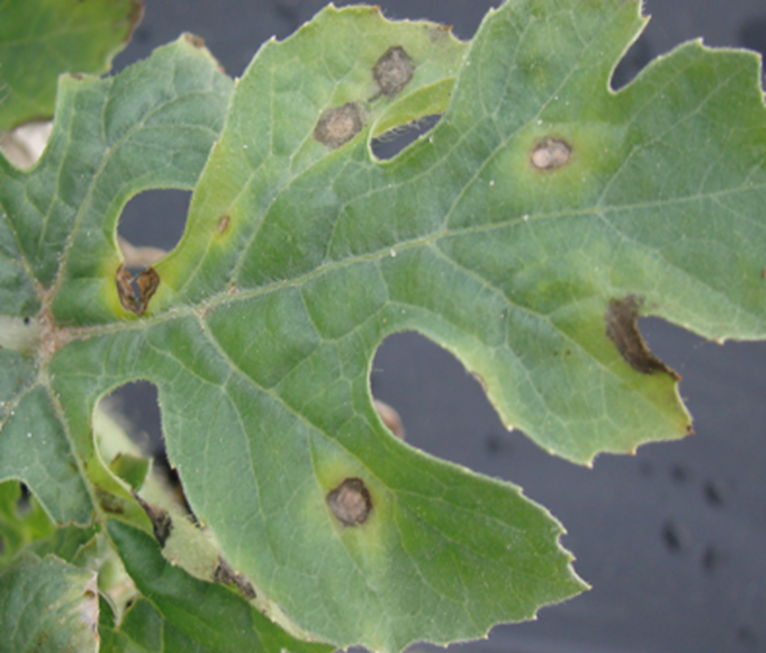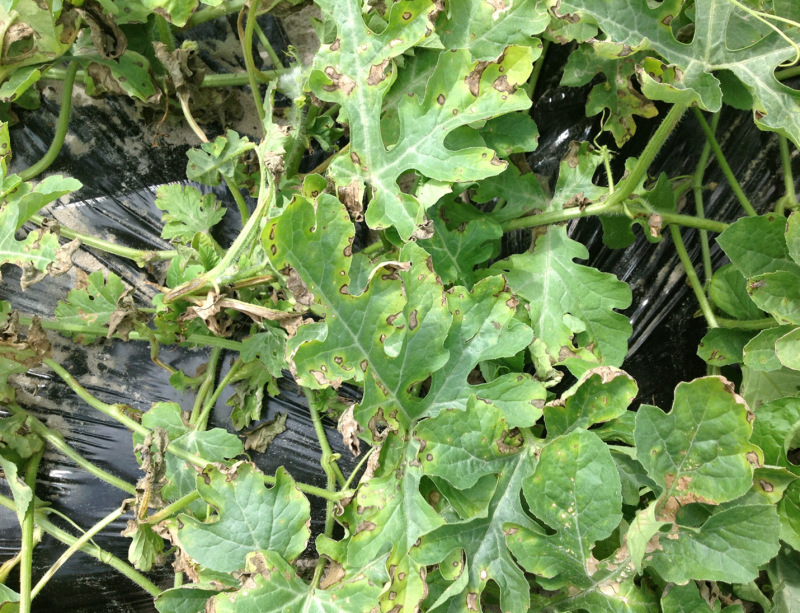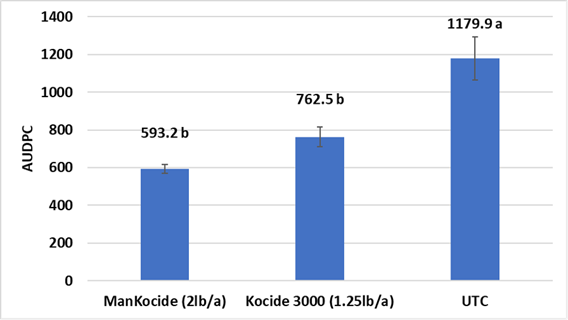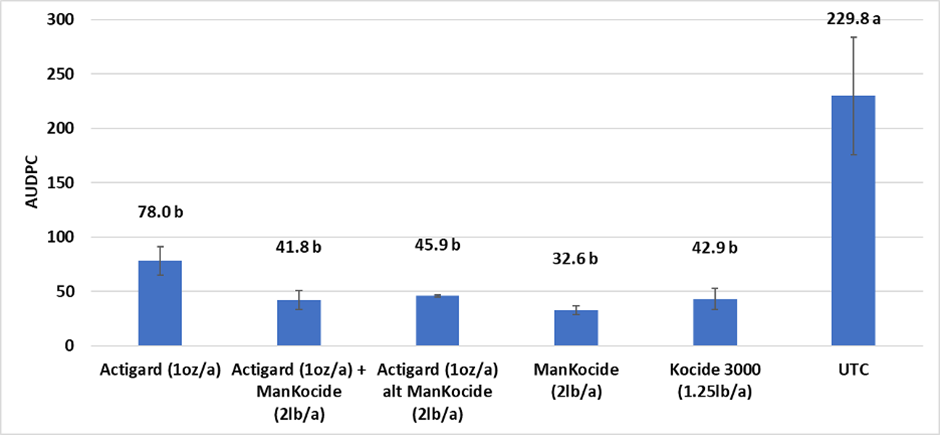Mathews Paret, Susannah Da Silva, Kiersten Bushong, Josh Freeman, Bob Hochmuth and Jeff Jones, UF/IFAS North Florida Research and Education Center
Many bacterial diseases annually affect the 7,500 acres of watermelon production in North Florida. Among these diseases, bacterial leaf spot, caused by strains of Pseudomonas syringae, can cause damage to transplants during early stages of production, that lead to delayed fruit maturity, and predisposition of the plants to other pathogens. Symptoms of bacterial leaf spot on a watermelon leaf in an early stage of production are shown below in Figures 1 & 2.

Bacterial leaf spot can cause damage to transplants during early stages of watermelon production. Credit: Matthews Paret, UF/IFAS
–

Figure 2 Symptoms of bacterial leaf spot on watermelon leaves in a commercial field. Credit: Matthews Paret, UF/IFAS
–
It is important to understand the general biology of the bacterial pathogen on cucurbits and how the disease can spread in a production system through seed, transplant, or in field. An article entitled Know Your Florida Watermelon Disease and Pathogen in the Florida Watermelon Association newsletter outlines the details which highlight the important aspects in the spread of the disease relevant to all cucurbit crops.
From a field disease management standpoint, we have been conducting studies at UF-IFAS-NFREC, Quincy to evaluate performance of copper (Kocide 3000), copper + mancozeb (ManKocide), that are general protectants, and a plant defense inducer Acibenzolar-S-Methyl (Actigard) that is known to activate plant defense genes against pathogens. Below, findings from the 2020 and 2021 spring season field studies are highlighted.
In general, there was higher disease pressure in the spring 2020 study, as compared to the 2021 study. In Spring 2020, Kocide 3000 and ManKocide significantly reduced disease severity, compared to the untreated control (UTC), as indicated by the Area Under Disease Progress Curve data, which is a method to evaluate disease severity over a period of time (the higher the AUDPC, the higher the disease severity), as seen in in Figure 3.

Fig. 3: Different letters above bars indicate statistical differences of treatments in spring 2020, as compared to the untreated control (UTC) plots.
–
In Spring 2021, the study also included rotation programs, or combinations of ManKocide and Actigard. This study demonstrated that all the treatments significantly reduced bacterial leaf spot on watermelon in comparison to the untreated control (UTC), as seen in Figure 4.
–
This research demonstrates the utility of both copper protectant fungicides and Actigard in reducing negative impact of bacterial leaf spot of watermelon.
This research is funded through a USDA-SCRI project “Integrated Management of Emerging Seedborne Bacterial Diseases of Cucurbits and Chenopods” (2019-51181-30019) funded to the University of Florida team of Mathews Paret, Jeff Jones, Josh Freeman and Bob Hochmuth with support from the Florida Watermelon Association and National Watermelon Association serving as stakeholder in this project, and also funded by the University of Florida Hatch project FLA-NFC-005974. Please contact Mathews Paret, paret@ufl.edu for further information, and for reporting disease outbreaks this spring season on watermelon and other cucurbits.
- Mathews Paret Promoted to University of Florida Plant Pathology Department Chair - July 28, 2023
- Field Performance of Plant Protectants against Bacterial Leaf Spot on Watermelon - February 11, 2022
- Using Scouting and Diagnostic Confirmation to Improve Watermelon Spray Programs in North Florida - September 25, 2020

